Baking with Silicone
It was my first couple of yoghurt cakes, or should I say my first ‘metal tin’ yoghurt cake versus my first silicone pan yoghurt cake which got me thinking about silicone. And when I say silicone, I refer not to the controversial stuff or the resin (used for children’s dinnerware) but to the new trend in bake ware!
Everywhere you look, you’ll find silicone on the store shelves, in a variety of shapes, colours, sizes and for various uses.
Silicone is often mistakenly referred to as “silicon.” Although silicones contain silicon atoms, they are not made up exclusively of silicon, and have completely different physical characteristics from elemental silicon.
I personally have a range of silicone products in my kitchen. I have spatulas, pastry brushes, egg poachers, baking tins, a cookie sheet and more. I like them, cause they’re very easy to clean and flexible. Silicone products are heat-resistant, they can withstand temperatures of up to 360 degrees centigrade though I always have a look at my specific utensil to find out its recommended temperatures.
Anyway, I wanted to make a cake which called for a Bundt pan. Since I didn’t have one, I borrowed one from my neighbour, made the cake and returned it. However, the cake turned out very nice (a tad too sweet though) and I thought if I was going to do a repeat, it was better if I got my own Bundt tin and so began the search which ended up in me buying a silicone Bundt pan – it was the only one I could find on the day I went a-looking.
Anyway, I was a bit skeptical about using it, as I’ve always had this things about plastic/rubberised cookware. I’m aware there’s a lot of controversy about what should and should not go into the microwave. And so as soon as I got it, I went a-googling, to find the ‘silicone’ test which I knew must exist. I came across an article which gave me tips on how to check the quality of silicone bake ware. So do this when you go out to buy:
Because some silicone products incorporate fillers, the product may not be 100%. You can check if they’re potentially compromised by pulling or pinching. If the product contains fillers, it will turn white. And of course, you know what to do then. Just in case you don’t know, I’ll say it – don’t buy.
Thankfully, mine was fine especially as I did the test at home, after the fact.
Some silicone bake ware is generally inexpensive in my opinion – I recently got a 12-pack of silicone cupcake moulds for under 2 Euros. Almost the same price as you’d get for cupcake paper liners. They are also quite colourful – I have seen them in almost every colour. In the same breath, I also have a set of egg poachers which I got for 10 euros! They’d better last for ever.
I’ve done numerous cake tests with metal and silicone and the key differences are:
Preparing the tins: Silicone moulds shouldn’t need greasing. They’re non-stick – a great, great plus for them.However, I prefer to grease them, spraying with some oil spray to allow easy release of my baked goods. I especially grease them when I’d like some ingredient to adhere to the sides like flaked almonds or desiccated coconut. Metal bake ware on the other hand must be greased in one way or the other. One tick for silicone
Putting in the oven: Funny I should mention it right, after all with metal tins, it’s not an issue that ever comes up. Well with silicone, it is a big and tricky issue- cold (into the oven) and hot (coming out of the oven). Because Silicone is lightweight and rubbery, it is flexible….. Extremely FLEXIBLE. So flexible that I’ve literally wrestled to keep some cake mixes from hitting the floor with a splatter, only a few minutes from baking heaven. (If you can conquer this, victory is yours. And I’ve learned the secret. Read on) But flexibility is not a problem you ever have with Metal so on this front, Metal wins hands down….
But I’ve found a solution to handling silicone pans, thanks to those who’ve been before me. So now if I’m using the silicone pans, I’ll make sure I start by getting out an oven tray or rack, and laying them on it before I fill the cakes. One tick for metal, sniff, sniff for Silicone.
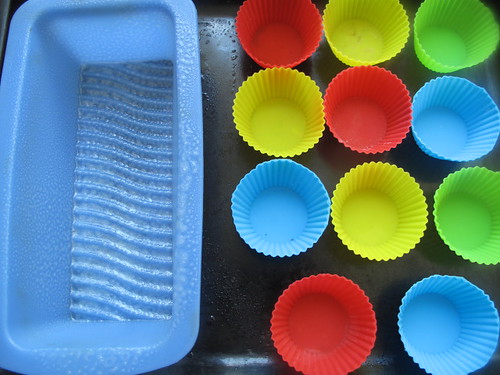
The shape of the cakes:When I used the Bundt pans, the cake baked in the silicone pan ended up uniformly round, without sloping edges. My cake from the metal Bundt pan had a slight dome shape with sloping sides. In essence, my silicone cake looked like a round cake with a slightly rounded upper rim and a home, not like a real Bundt cake but since I’m no purist, that’s good by me! My cupcakes though look normal, just as they would with if I used paper cupcake liners in a regular tin. 0.5 tick for silicone, since I don’t care how the cakes look, but others may
The texture of the cake: Well this test wasn’t a fair one, I must say. I sprinkled some desiccated coconut inside my silicone pan, and the resulting texture of the cake was wow. Chewy exterior with soft interior – perfect cosmic balance. On the other hand, when I inadvertently did the test in my Bundt pan cakes, the textures were markedly different with the silicone cake coming out much better. Can you tell yet that I love it? Yet another tick for silicone
Getting the cake out: This is when silicone rocks and comes up trumps. It’s a walkover getting the cakes out of any of the silicone bake ware. However, like with any other cake, baked in any tin, I wait a few minutes for it to cool down before tipping it now. I haven’t ended up with broken cakes from my silicone pan… yet. I haven’t had to dig out trowels, spatulas or anything else to help get the cake out – and I can’t say that about past experiences with metal tins. And even yet another tick for silicone
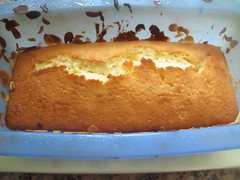
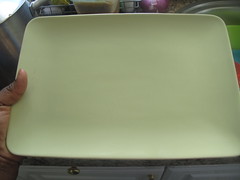
Cleaning up: Silicone bake ware cleans up a treat, I’m done in minutes. I find with metal that I may need to soak a tin for a while especially if things have gone awry up till now. Silicone – 1, metal – none.
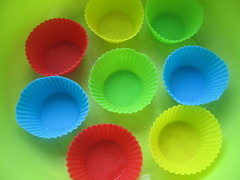

Storage and all the rest: Well, silicone tends to discolour a little bit, so does metal, Silicone could get pierced by sharp objects, which could potentially render it useless. I guess metal wouldn’t suffer the same fate. It may be scratched but it would take more than a knife to put it out of commission. Silicone also tends to be a bummer to store. But I also have issues fitting all my pans in my cupboard. So that’s a tie. In this category, slicone ends up with a 0.3 out of a total 1. Metal wins, hands down.
Overall silicone wins – for me that is. You must make your choice. Try it. Make a mix, split it in two. Bake one in a silicone pan and the other in a metal pan. See what happens. You be the judge.
For me, it is my favoured bake ware these days and with all the assurances of safety I will continue using it…. With as much caution as I can exercise.
I forgot to mention that in addition to being oven safe, they are dishwasher safe, and freezer safe. And make great moulds for jellies……
What more could you wish for?
Where to find them?
In the Netherlands, you’ll find them in fantastic homeshops like Xenos, Action and other larger shops
In the UK, I’ll bet you can find them at Asda, Tesco and the like
and in the US, If Target doesn’t stock them or Walmart…. I’d be very suprised!
References
Cookware and bake ware on Wikipedia
This site uses Akismet to reduce spam. Learn how your comment data is processed.

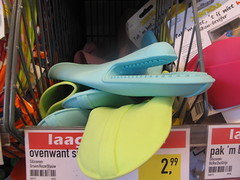
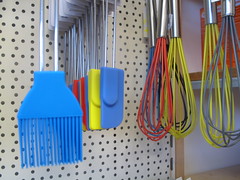
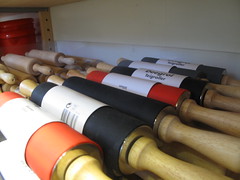
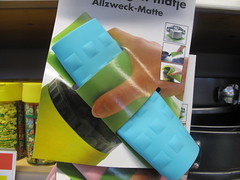

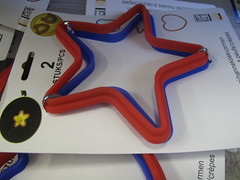
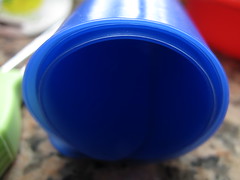

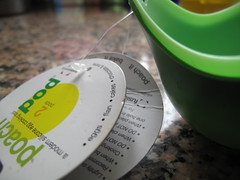
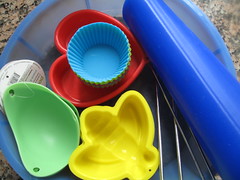



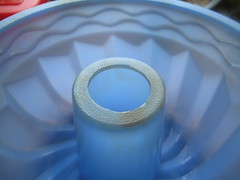
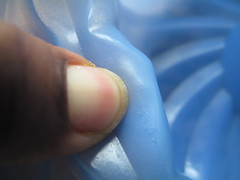
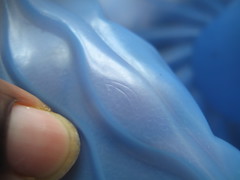
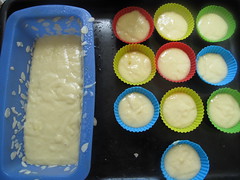
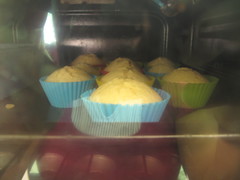
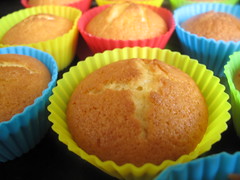
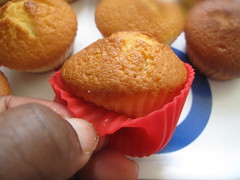
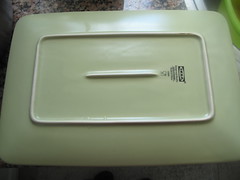
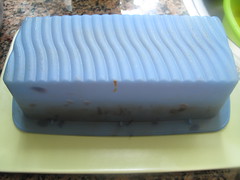
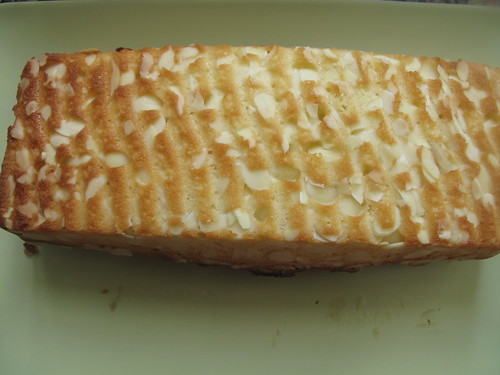
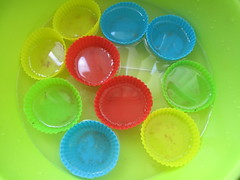
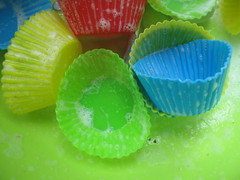
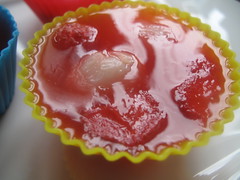
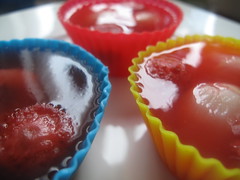
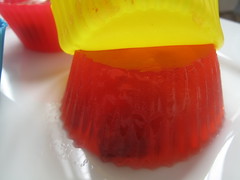
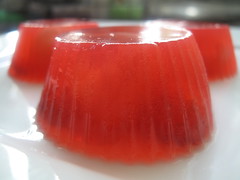

Leave a Reply